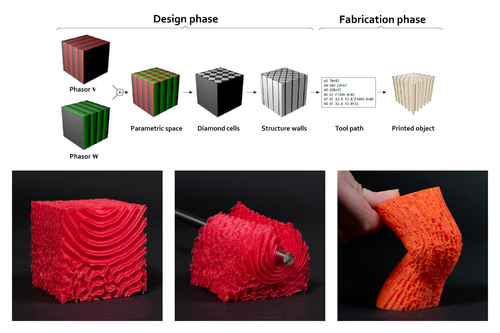Pre-recorded Sessions: From 4 December 2020 | Live Sessions: 10 – 13 December 2020
4 – 13 December 2020
Pre-recorded Sessions: From 4 December 2020 | Live Sessions: 10 – 13 December 2020
4 – 13 December 2020
#SIGGRAPHAsia | #SIGGRAPHAsia2020
#SIGGRAPHAsia | #SIGGRAPHAsia2020











Date/Time:
04 – 13 December 2020
All presentations are available in the virtual platform on-demand.
Lecturer(s):
Thibault Tricard, I.N.R.I.A. Nancy, University of Lorraine, France
Vincet Tavernier, INRIA, France
Cedric Zanni, University of Lorraine, France
Jonàs Martínez, INRIA, France
Pierre-Alexandre Hugron, INRIA, France
Fabrice Neyret, INRIA, France
Sylvain Lefebvre, INRIA, France
Bio:
Description: Nature offers a marvel of astonishing and rich deformation behaviors. Yet, most of the objects we fabricate are comparatively rather inexpressive, either rigid or exhibiting simple homogeneous deformations when interacted with. We explore the synthesis and fabrication of novel microstructures that mimic the effects of having oriented rigid fibers in an otherwise flexible material: the result is extremely rigid along a transverse direction while being comparatively very flexible in the locally orthogonal plane. By allowing free gradation of the rigidity direction orientation within the object, the microstructures can be designed such that, under deformation, distances along fibers in the volume are preserved while others freely change. Through a simple painting tool, this allows a designer to influence the way the volume reshapes when deformed, and results in a wide range of novel possibilities. Many gradations are possible: local free orientation of the fibers; local control of the overall material rigidity (structure density); local canceling of the effect of the fibers, obtaining a more isotropic material. Our algorithm to synthesize the structures builds upon procedural texturing. It produces a cellular geometry that can be fabricated reliably despite 3D printing walls at a minimal thickness, allowing prints to be very flexible. The synthesis algorithm is efficient, and scales to large volumes.
